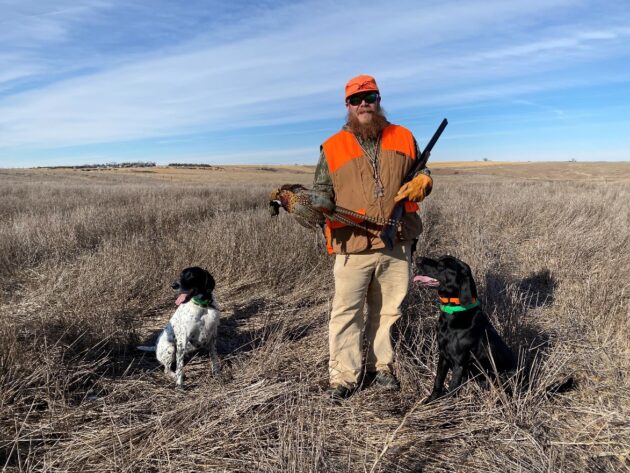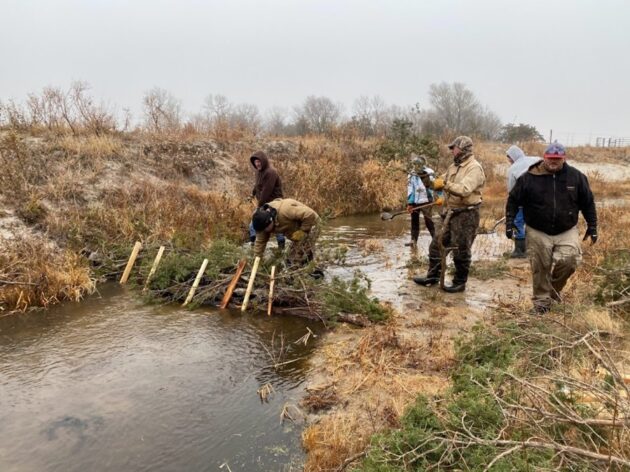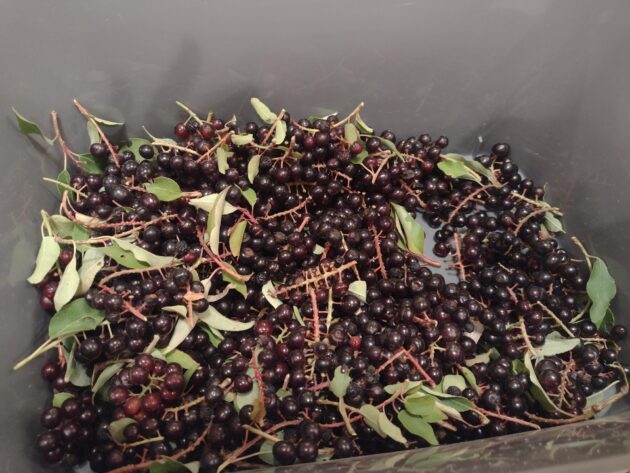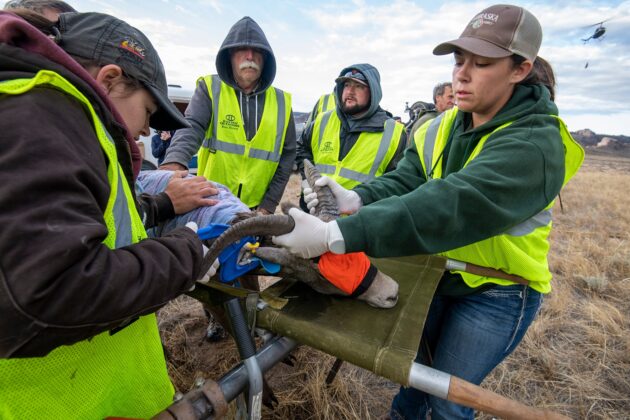
With the fall season upon us, orange can be seen everywhere. On leaves, in store décor, and coating the hunting gear being pulled out of storage. There is another orange to be added to the mix, but in an unlikely form. Recently, Sarah Ashbrook, a Pheasants Forever farm bill biologist out of southern Nebraska, had the opportunity to join the Nebraska Game and Parks Commission while they performed annual surveys for the American burying beetle (Nicrophorus americanus). These surveys last a week and occur in various locations across the state.
Not the only orange and black burying beetle in Nebraska, the American burying beetle (ABB) is a striking sight. The ABB is distinct, as the largest of the species and having more orange across the body than others. Typically, two inches long as an adult, ABBs are identified by their orange pronotum, the middle body segment. Males and females can be told apart by the amount of orange on the head, with males having more.
The American burying beetle is a large carrion eating beetle historically native to the eastern half of North America. Previously listed as federally endangered, now labeled threatened, the species is only believed to occur in a handful of states. One of the largest remaining populations occurs in central and southwestern Nebraska. Habitat loss, as well as increase in competitive scavenger species like raccoons and opossums, are thought to be contributing factors for the ABBs decline.
Many people don’t spend much thought on the insects around them, other than to swat an annoying fly or watch a beautiful butterfly. Having diversity in the creatures around helps maintain a healthy world. Called a burying beetle for a reason, they take their food underground to feed their family, meanwhile some of the nutrients from the food leaches into the soil. These curious beetles not only aid in the natural breakdown of dead animals, but the process of passing nutrients back into the soil. They are a unique creature, being monogamous and providing care for their offspring. This is an uncommon trait in the insect world. With these factors, it is important for biologists like Sarah and partners at the Nebraska Game and Parks to conduct annual surveys.
 Pitfall bucket traps are used to temporarily hold the beetles so they can be counted and marked. Surveying for ABB is a stinky affair as expired rodents are used to attract the beetles. Despite some of the gruesome tasks, the survey is a wonderful opportunity to glimpse these colorful and active creatures. If you happen to see biologist counting beetles from buckets across the Loess Canyons and Sandhills in August, then perhaps you may have a chance to see this fascinating beetle.
Pitfall bucket traps are used to temporarily hold the beetles so they can be counted and marked. Surveying for ABB is a stinky affair as expired rodents are used to attract the beetles. Despite some of the gruesome tasks, the survey is a wonderful opportunity to glimpse these colorful and active creatures. If you happen to see biologist counting beetles from buckets across the Loess Canyons and Sandhills in August, then perhaps you may have a chance to see this fascinating beetle.
Thankfully, finding ways to help the ABB does not mean putting stinky rats around your home to feed them. If you’re interested in this beetle and its conservation, one thing you can do is minimize ground disturbing activities within the place and time they occur. They are active underground most during the summer. Through the annual research over the past 15 years, it has been suggested that prescribed fire and the maintenance of trees in the grassland landscape also benefits the ABB. Additionally, volunteering for surveys or spreading the word are great ways to help our native insects and maintain our vital soil.
To learn more about the American burying beetle and other species, head to the Nebraska Game and Parks Commission website: http://outdoornebraska.gov/americanburyingbeetle/.

About the Author: Sarah Ashbrook
Sarah Ashbrook is a wildlife biologist serving Hayes and Perkins counties. With a passion for learning more about the native species of Nebraska, she enjoys participating in wildlife surveys and discussing conservation.






